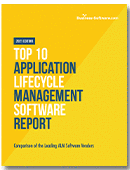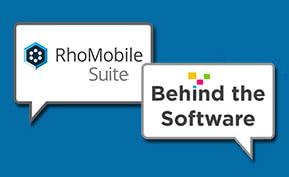Application Development
3 Steps to Transform into a Mobile Application Developer

We live to nurture our apps from conception to application development to updates until death. Working as an application developer is like communicating with another dimension where a month is a year and a year is a decade. We see the entire, complex lifespan of our powerful software tools in less than two years before a new generation overturns the old.
Because software is constantly living and dying, developers perceive time the way software moves: they immerse in their careers, not wanting to miss a moment. But have you really kept up and ensured you have the skills to be a full-fledged mobile application developer, maintaining your desktop development chops along the way? Maybe not. We’ll help set you on the right path.
Here are three phases to undergo to ensure a complete transformation into the new generation of software development:
1. Debate Android vs. iPhone, not Windows vs. Mac
You know you’re a mobile developer when “Windows” faded out of conversation in favor of “Android,” “iPhone” and “iPad,” carrying your debate from PC vs. Mac to Android vs. iPhone. From a developer’s perspective, the debate is just as ugly. Here are some key differences that might serve useful when developing for either platform:
Android has More Development Resources
Across the board, developers have reported Android as easy-to-learn. Cameron Henneck, who had the advantage of creating iOS tools in the past, picked up Android development twice as fast as iPhone development, crediting the amount of documentation available: official documents, third-party tutorials, reference books, code samples and Stack OverFlow posts. In a mere two weeks, he found himself comfortable communicating with an Android-powered device, yet Henneck required four weeks of sifting through outdated material to finally feel ready to tackle iOS.
iOS Allows You to Control Navigation
Unlike iOS, Android requires the inclusion of certain navigation elements in your application. While Android users always have Back, Home and Recents buttons, the common Menu and Search buttons need to be added manually. Aside from the Home button, iOS gives complete, unrestricted control of your layout and navigation. Just be sure you know what you’re doing; users can become frustrating navigating a poorly-mapped app, especially when there’s no back button.
Droid is Open Source; iOS is Closed Source
Remember that Android is easier to learn due to its number of resources? That’s because Android is an open source platform, allowing developers to publish and share data in a less restricted environment. Applications on Android devices often integrate well with one another. These integration capabilities allow for easy sharing to email and social media sites. iOS applications, in comparison, do not communicate well with one another. The only way you can “invoke” another application is through a URL scheme (e.g. itms:// for App Store) that the application developers create for one-way communication.
2. Start talking HTML5 and Javascript
Don’t get me wrong. The C languages (like C++, C# and Objective-C) are still foundational to a solid programmer’s education. But it’s time for us to get off our high horses and give scripting languages their due respect, especially when we talk about mobile development. HTML and CSS are far from the static, limiting tools they were in early 2000s. They now allow us to perform powerful visual feats in design, with fairly new animation and layout tools. Plus, with JavaScript, Ruby and PHP, we can create incredible mobile applications that compliments our existing websites.
For a solid education in programming, however, you will still want to brush up on your programming languages like Java (Android) and Objective-C (iOS).
3. Invest in a Mobile Application Development Tool
From prototyping to testing, you will need tools to help you build the best applications possible. All of the documentation and tutorials in the world won’t help you thoroughly debug your application, prototype ideas or assist in conducting A/B testing. Mobile application development tools take your software to the next level. But don’t take our word for it. Here are examples of some great tools:
Phonegap
 Developed by Adobe, PhoneGap is a free mobile application development tool that allows you to “create apps using the web technologies you know and love,” namely HTML, CSS and Javascript. You can then run your application on any mobile device (Windows, Android, iPhone, Blackberry) regardless of operating system. The robust tool also allows you to develop locally, testing changes on your own mobile device as you progress.
Developed by Adobe, PhoneGap is a free mobile application development tool that allows you to “create apps using the web technologies you know and love,” namely HTML, CSS and Javascript. You can then run your application on any mobile device (Windows, Android, iPhone, Blackberry) regardless of operating system. The robust tool also allows you to develop locally, testing changes on your own mobile device as you progress.
AppGyver Composer
The ![]() AppGyver’s Composer tool is exactly what it sounds like — a mobile text editing tool specifically for mobile development. The vendor claims that this tool provides the “fastest way to bootstrap high-quality mobile apps,” and our sources don’t question that. AppGyver’s Composer allows you to quickly integrate APIs and code complex logic in a simple touch-screen interface. Then test your app then and there, with native UI and access to all tools on your phone’s actual hardware.
AppGyver’s Composer tool is exactly what it sounds like — a mobile text editing tool specifically for mobile development. The vendor claims that this tool provides the “fastest way to bootstrap high-quality mobile apps,” and our sources don’t question that. AppGyver’s Composer allows you to quickly integrate APIs and code complex logic in a simple touch-screen interface. Then test your app then and there, with native UI and access to all tools on your phone’s actual hardware.
Corona SDK
 Corona SDK specializes in thrilling 2D animation on your smartphone, perfect for those interested in developing video games. SDK has a large API library which allows users to simply enable animation and networking. Corona’s strength is that it’s fast, efficient and lightweight, working well with older versions of smartphones without sacrificing the quality of animation. Corona also publishes to all major app stores, including Amazon and Windows stores.
Corona SDK specializes in thrilling 2D animation on your smartphone, perfect for those interested in developing video games. SDK has a large API library which allows users to simply enable animation and networking. Corona’s strength is that it’s fast, efficient and lightweight, working well with older versions of smartphones without sacrificing the quality of animation. Corona also publishes to all major app stores, including Amazon and Windows stores.
Congratulations! You’re a Mobile Application Developer
 After you completed these three steps, it’s safe to say you are adept at speaking the mobile application developer language. However, your education is never over. As a mobile application developer, you are always learning new skills. That’s why at Business-Software.com, we are constantly conducting research for you, compiling Top 10 Application Development reports and comparing the industry leaders in pricing and features. Download our reports and check back regularly on our blog to stay up to date on industry news, trends, software and advice.
After you completed these three steps, it’s safe to say you are adept at speaking the mobile application developer language. However, your education is never over. As a mobile application developer, you are always learning new skills. That’s why at Business-Software.com, we are constantly conducting research for you, compiling Top 10 Application Development reports and comparing the industry leaders in pricing and features. Download our reports and check back regularly on our blog to stay up to date on industry news, trends, software and advice.
[Image courtesy of Takashi Hososhima]






